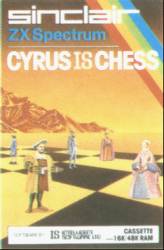 | Enterprise History |
|
From their experience of producing software for various machines IS were well placed to decide what the specification of their ideal home computer would be. At first they considered something similar to the Spectrum but with an improved keyboard and priced around the £100 mark, but this had already been done in the shape of the Oric 1, and such a machine was likely to be outdated by the time it came to market. Instead IS decided to produce a more upmarket machine with a good keyboard, large 64 kilobyte memory, and a wide range of colours available on the screen to improve its games capability. The computer was codenamed DPC (Damp Proof Course) to keep it secret and design work began in earnest in October of 1982. IS were not satisfied with any available chipsets for the display so employed Nick Toop, who had worked on the design of the Acorn Atom, to produce a custom graphics chip with very flexible control of number of colours and resolution of the display. A custom sound generator chip was also designed, this time by Dave Woodfield who was the 1981 Micromouse champion. (Micromouse was an annual competition to build a small robot which could find its way through a maze.) The sound chip provided full envelope control over four voices in stereo. Much thought went into the external appearance of the 'DPC' to make it look both eyecatching and like a stylish household appliance. By February 1983 the shape was fairly settled and wooden mock-ups were commissioned. At this time it had been decided to call the computer and/or the company Samurai but unfortunately Hitachi began selling a computer under this name, so IS changed the company name to Elan and called the computer the Elan Enterprise. By the end of 1983 there were about 50 people working on the Elan project. IS decided to use bright primary colours for the 'auxiliary' keys (function and editing keys) to give it a more inviting appearance but many reviewers later commented that this made it look rather toy-like. This was the machine which was shown to the press in September 1983 but although the case and most of the hardware was complete, it seems the graphics chip was not fully operational and the planned advanced BASIC was not yet running on the Elan. (The BASIC was running on other machines but was only just being converted for the Elan once the hardware was finalised. IS announced that the Elan Enterprise would go on sale in April 1984 but this proved overly optimistic. There were more problems with the name of the company since there was already a business called Elan Software. For a while the IS company called itself Flan Computers (apparently this name began as a typing error in a magazine), but, probably because Flan sounds such a silly name for a computer company, they changed it to Enterprise Computers Ltd. Even the latest name was not without its problems, since a company with the same name was already registered, though it was in liquidation in 1984. (Perhaps a bad omen?) An almost working version of the computer, now just called the Enterprise, was shown to the computer press during late summer of 1984 but even so it was January 1985 before full production versions of the Enterprise went on sale, and May 1985 before they were available in large numbers. This was over two years after development of the Enterprise started and the home computer market had changed in the meantime. The Enterprise still had a better specification than the popular home computers of 1985 like the Amstrad CPC464, Sinclair Spectrum and Commodore 64, but at £249 it was relatively expensive. More importantly the established competitors by this time had a huge range of software available whereas very little ever appeared for the Enterprise. To make matters worse the very first sixteen-bit home computers (Atari ST, Sinclair QL, Commodore Amiga) were launched soon after the Enterprise, and although initially more expensive they were faster and with a much larger memory capacity. A version of the Enterprise with 128 kilobytes of memory was produced but no further computers were designed by Enterprise Computers. About 60,000 Enterprises were sold in the UK (fewer than the number of Sinclair ZX80s sold five years previously), which was not enough to maintain the business. In June 1986 Enterprise Computers was put into liquidation. This was not quite the end of the story however as the stock of 20,000 or so unsold Enterprises found its way to Eastern Europe, mainly Hungary, and achieved quite a following there. |
 There was a company in the early 1980s called Intelligent Software whose best known product was the Cyrus chess program for the Sinclair Spectrum, though they also wrote and converted programs for other machines, and had designed a pocket chess computer. Late in 1982 Intelligent Software (IS) were approached by an investor to design their own computer as a rival to the fast-selling Spectrum.
There was a company in the early 1980s called Intelligent Software whose best known product was the Cyrus chess program for the Sinclair Spectrum, though they also wrote and converted programs for other machines, and had designed a pocket chess computer. Late in 1982 Intelligent Software (IS) were approached by an investor to design their own computer as a rival to the fast-selling Spectrum.